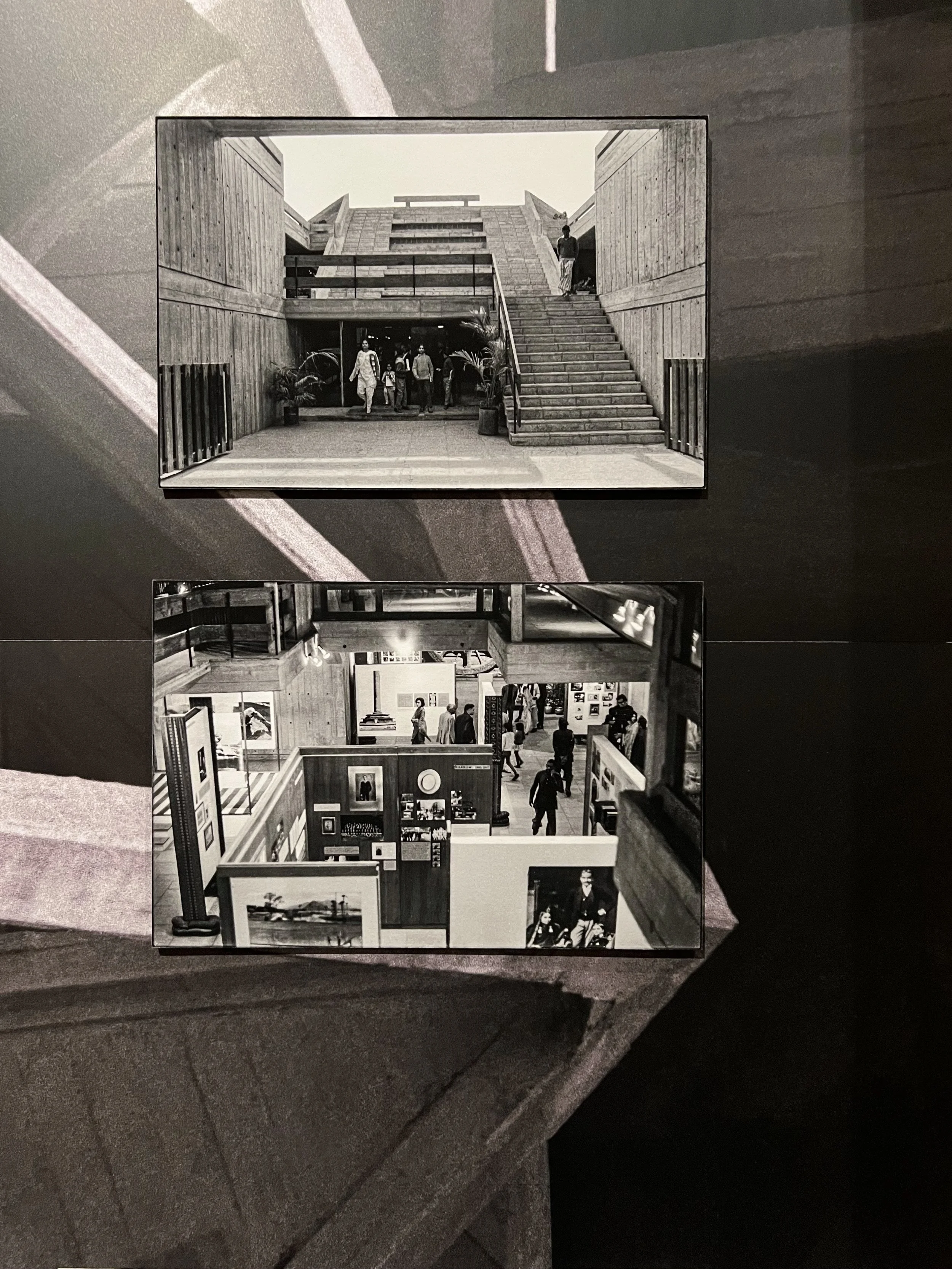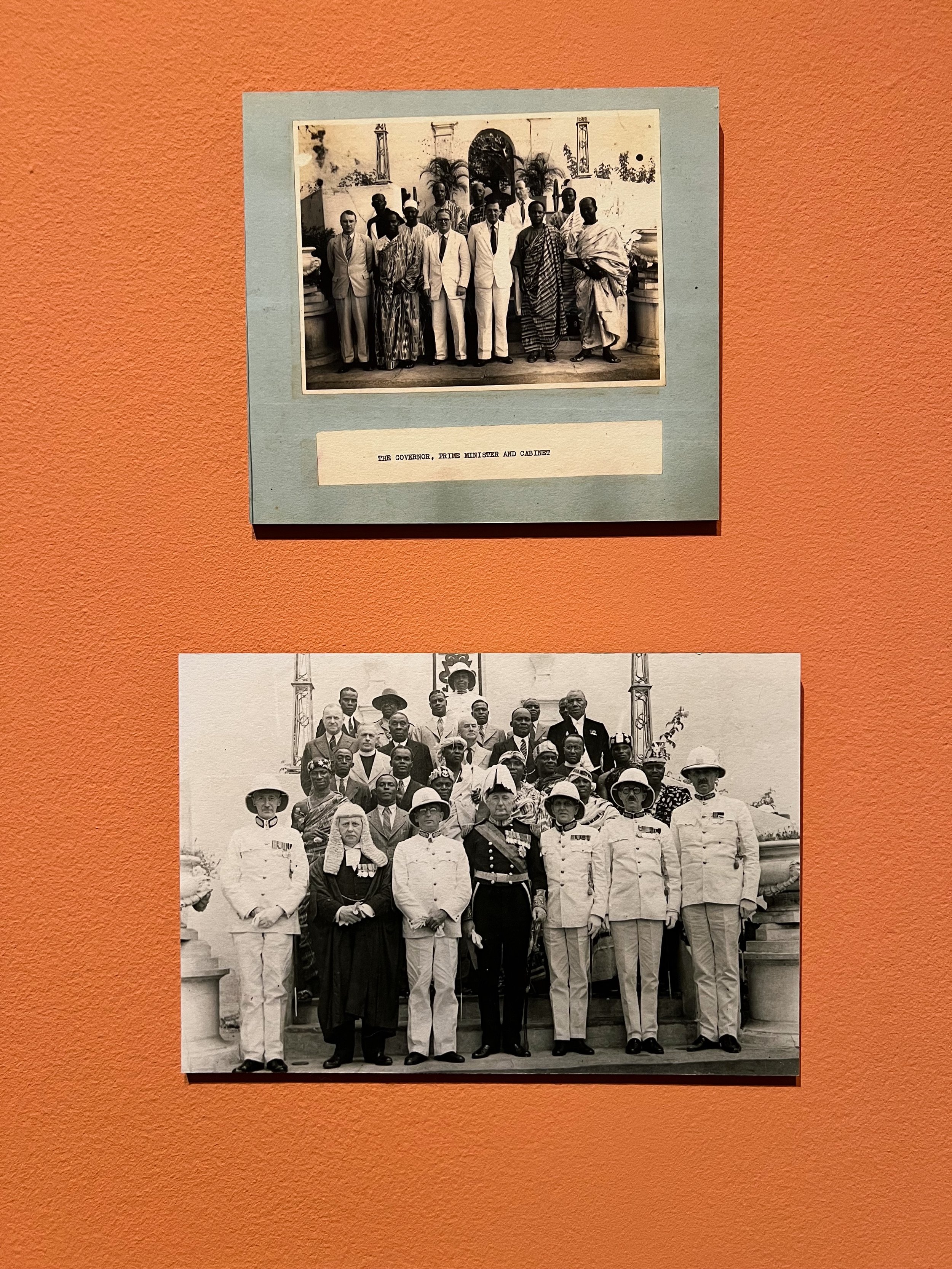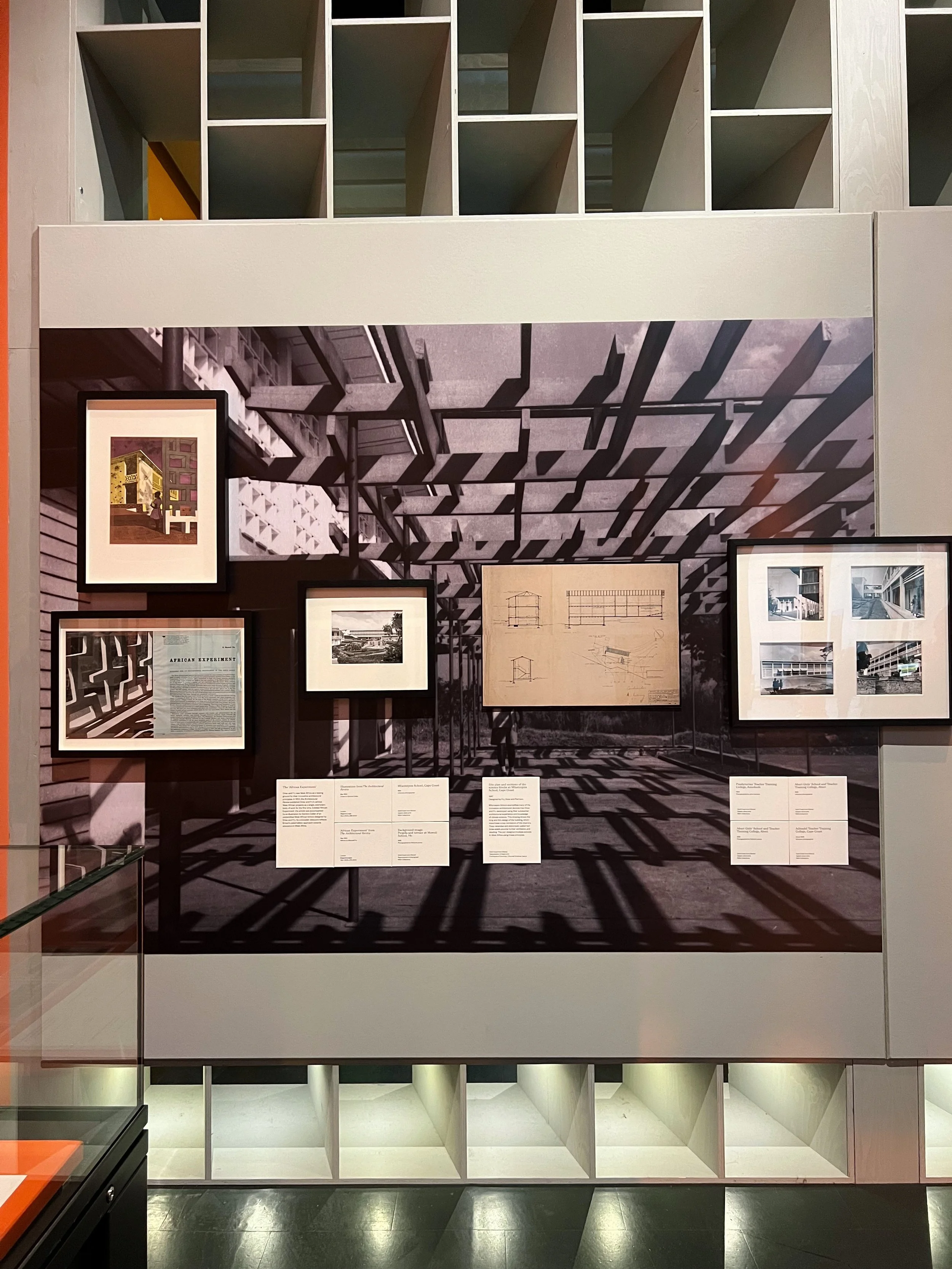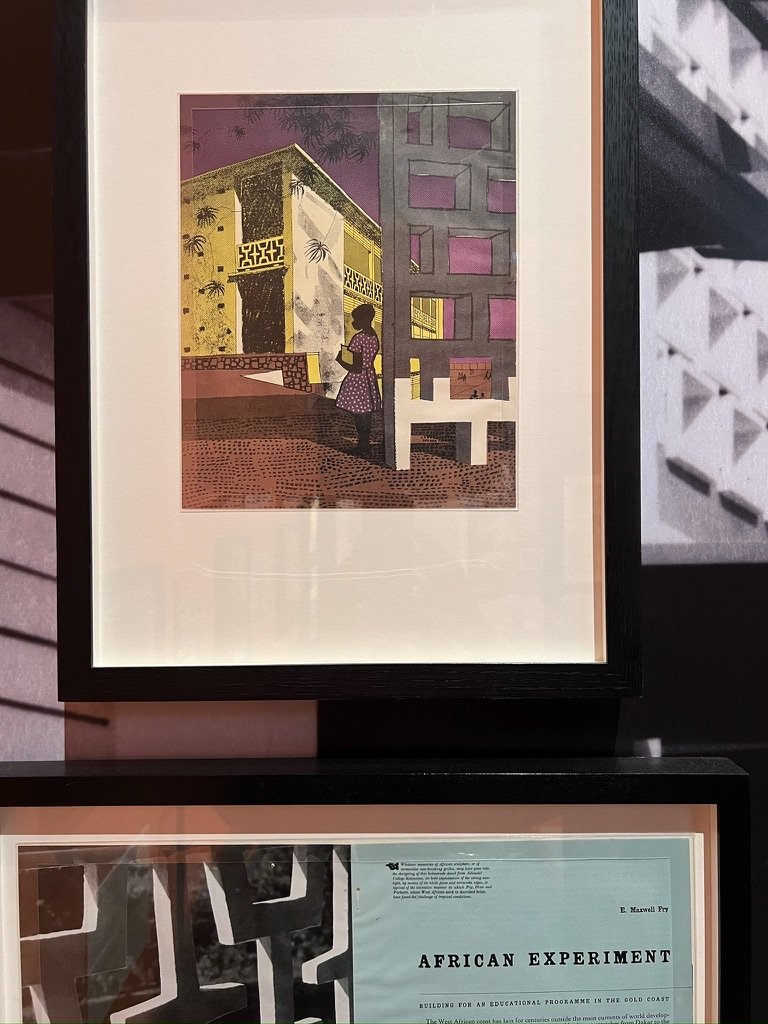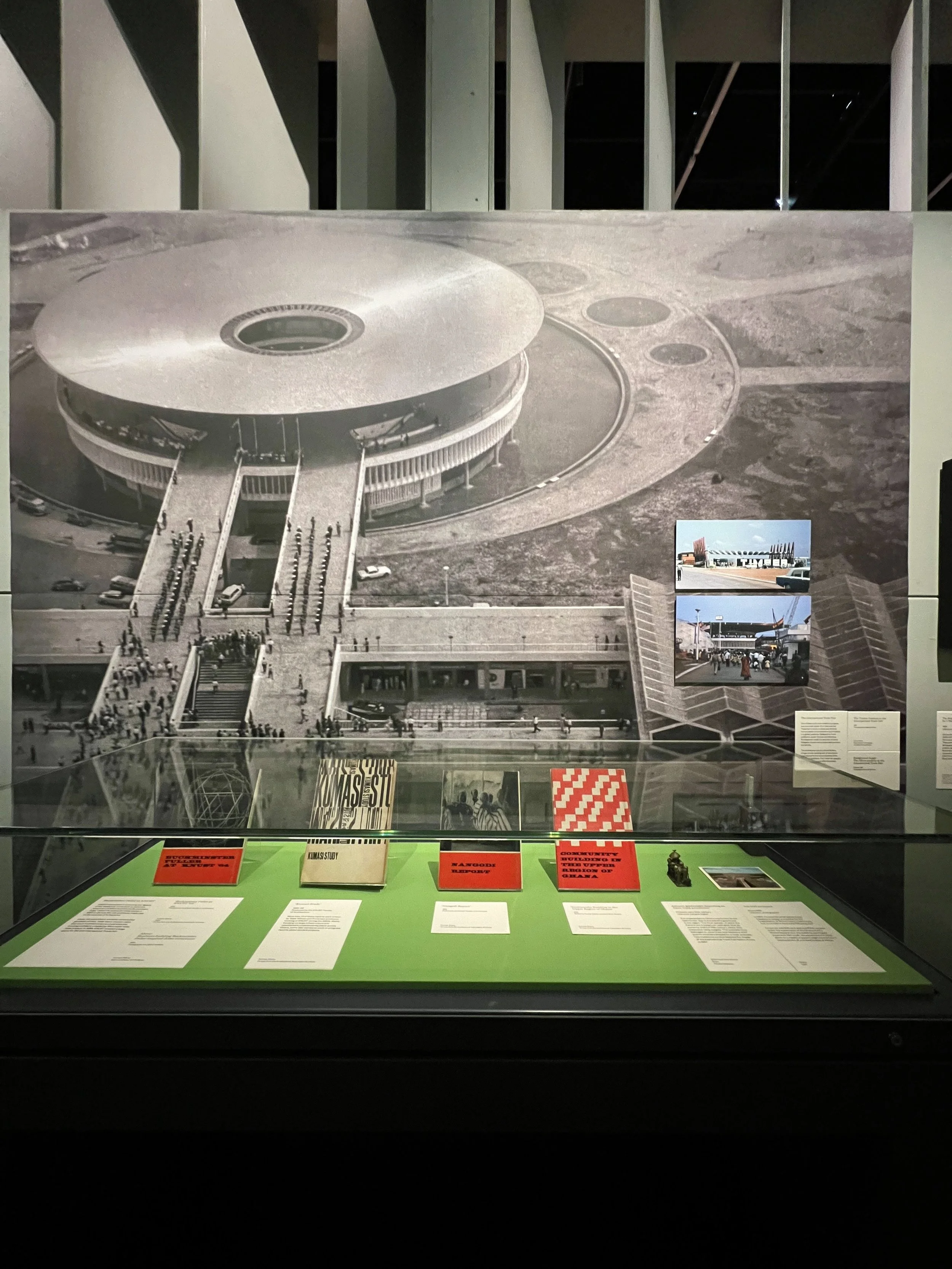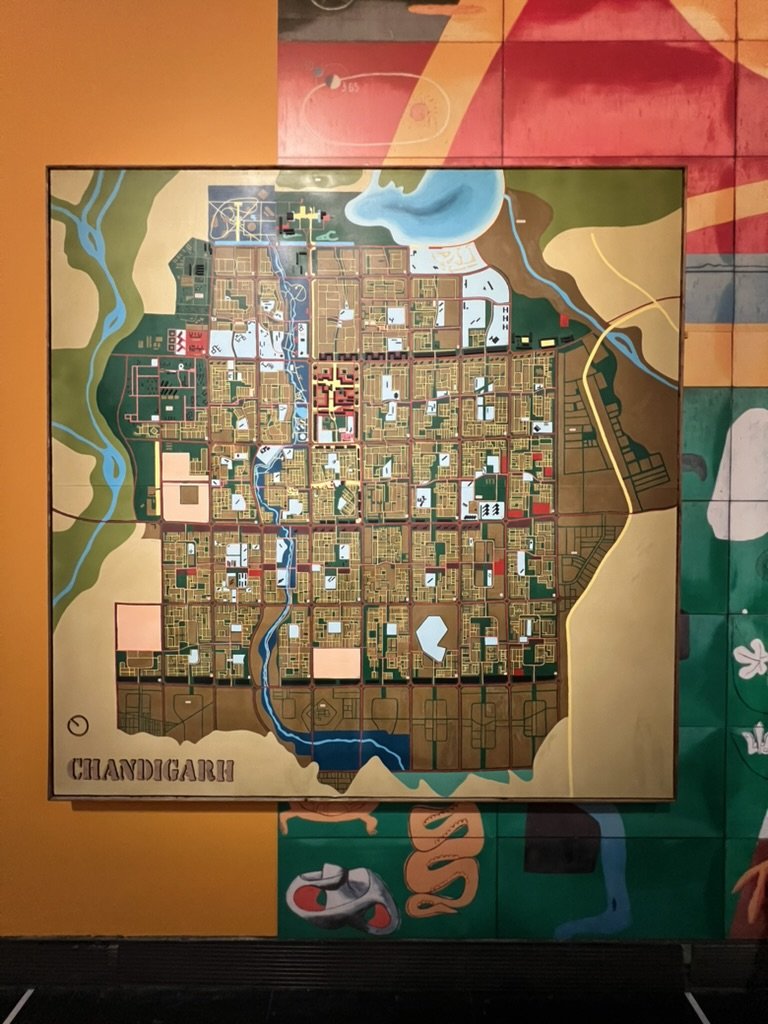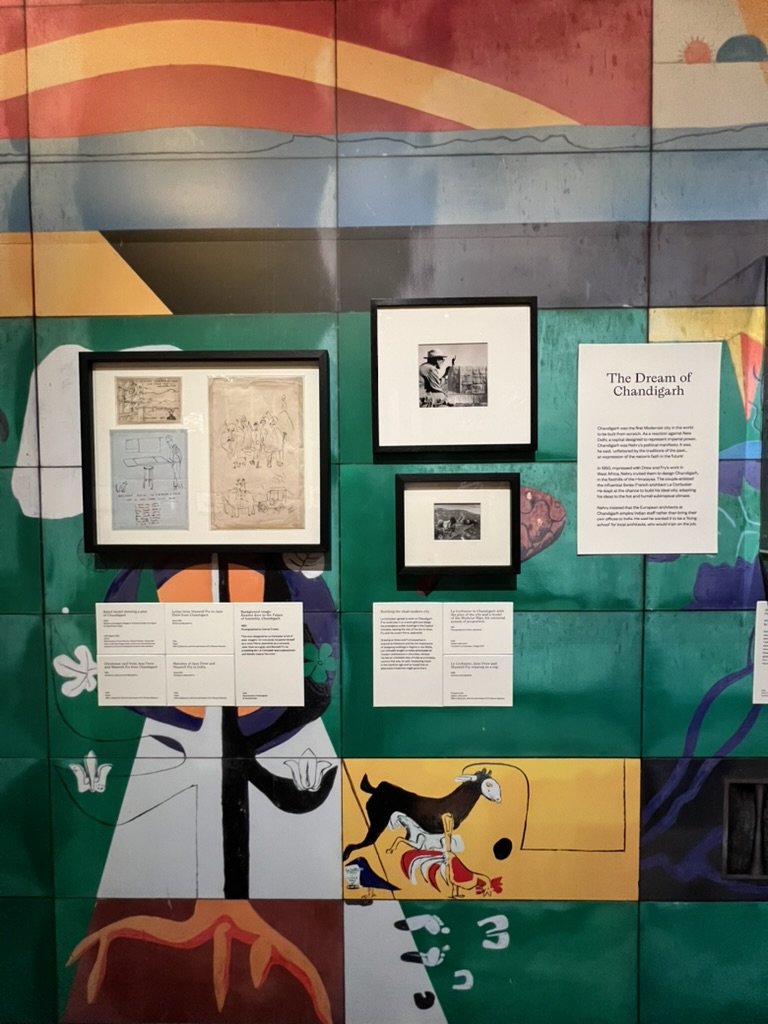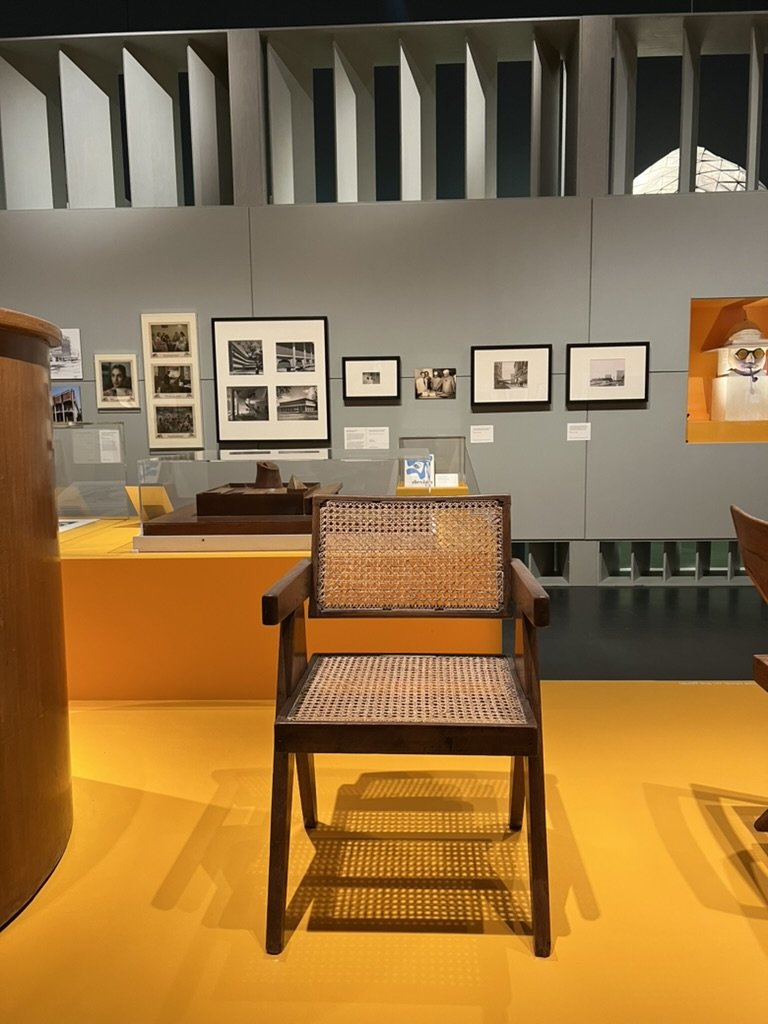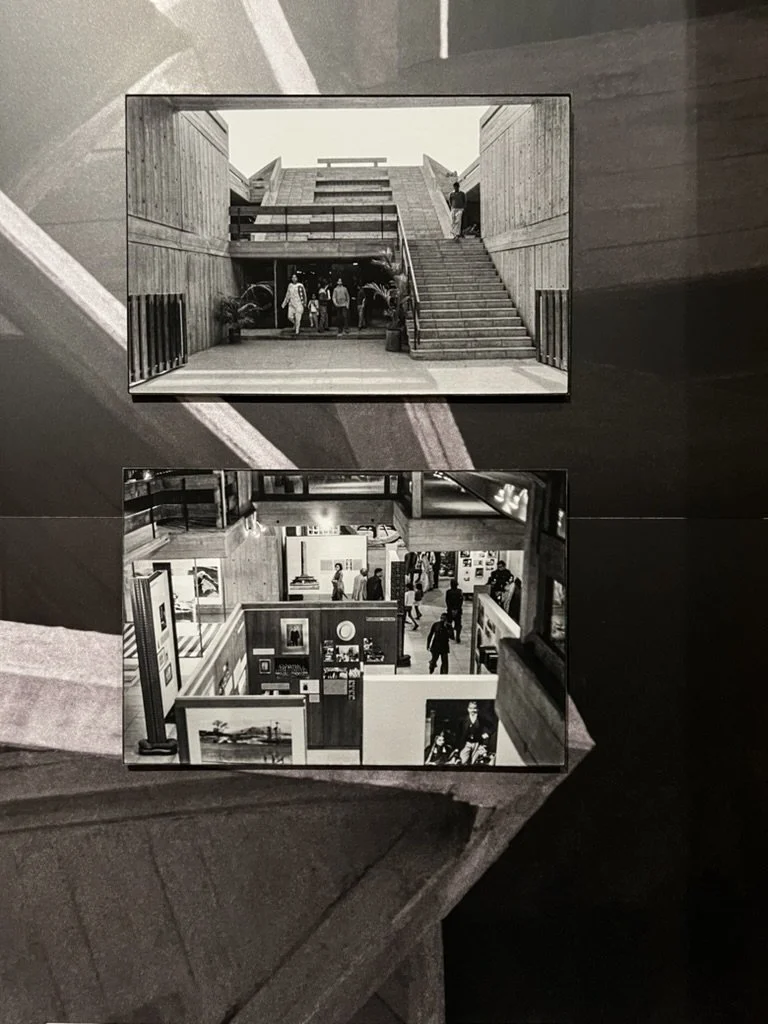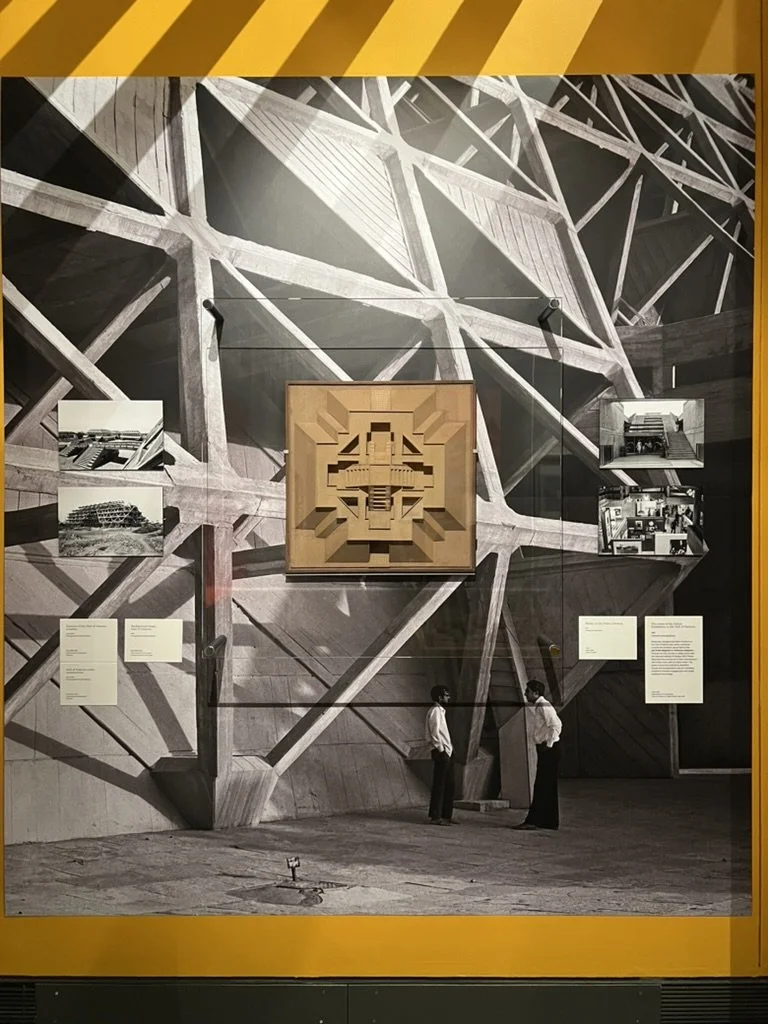Tropical Modernism Architecture and Independence
Tropical Modernism is an Architectural movement developed in West Africa during the British colonial rule of the 1940s and 50s; it was a means to counteract the increasing demands for independence by investing in modern education and public infrastructure projects in the West.
I have been anticipating visiting this exhibition for the last few months. It’s a special exhibition, which took me back to my Architecture Part 1 degree. My dissertation was on this movement, titled ‘ How has Nigeria’s unity with the British adapted their tropical Architectural language?’.
Maxwell Fry and Jane Drury became household names, my research and conversations centred around them almost daily. They were advocates that led the movement which failed to materialise in Britain, but prospered in the West. The purpose of the movement was to design spaces and places that responded to the hot and humid environment, this can be discovered further in their book ‘Tropical architecture in the dry and humid zones’.
Kwame Nkrumah on the cover of Time magazine, 9 February 1963. Photographed by Boris Challapin, Published by Time Ina. New York
Indian Prime Minister Jawaharlal Nehru and Ghanaian Prime Minister Kwame Nkrumah revitalized Tropical Modernism post-independence, transforming colonial architecture into symbols of progress and political ambition. They fostered a new wave of culturally attuned local architects to construct modern post-colonial architecture.
Brise soleil, a type of solar shading system consisting of semi-permeable screens with horizontal or vertical blades, regulates sunlight and heat entry into a building while allowing for ventilation.
Building for an educational programme in the Gold Coast, Maxwell Fry
On the 6th of March 1957, Ghana gained independence from Britain. Kwame Nkrumah was the first prime minister, who championed Tropical Modernism as a symbol of the nation's internationalism and progressiveness. Nkrumah, was a key figure in the Pan-African movement, and emphasised Ghana's independence as integral to Africa's total liberation, urging the Black diaspora to return and contribute. He facilitated the return of Ghanaian architects from America to design the country's modern architecture, establishing an architecture school locally to foster indigenous architectural talent for a united Africa.
Jawaharlal Nehru’s role in India reclaimed Tropical Modernism, using it as a tangible representation of the nation's internationalism and progressive ideals.
India gained independence in August 1947, leading to the need for a new capital in the Punjab region after the partition, which Prime Minister Jawaharlal Nehru addressed by planning Chandigarh, independent India's first major Modernist project. Nehru aimed to construct 'temples of modern India' to unify and industrialise the nation, promoting Modernism as a style free from colonial associations and encouraging Indian architects to return and explore indigenous Modernist expressions through established schools.
Office Armchair, About 1955, Designed by Pierre Jeannerat
‘The Chandigarh architects carefully considered all aspects of the new city designing details from street fittings to furniture tailored specifically to each building or purpose. This chair was made by local craftspeople using readily available materials such as teak wood and rattan caning, and was used in the High Court.’ Chandigarh, India Teak and cane, On loan from Richa Mukhia and John O'Shea
My second dissertation during my Interior design degree titled ‘How far did the design of Chandigarh, involve Indian Architects? ‘ discussed the involvement of Fry, Drew and Le Corbusier in the construction of the city.
Two views of the Nehru Exhibition in the Hall of Nations, 1981
Unknown photographers
‘Rewal also designed the Nehru Pavilion on the Hall of Nations site, which contained a memorial exhibition about Nehru's life and times designed by American designers Charles and Ray Eames in collaboration with the National Institute of Design (NID). Rewal describes his practice as modern architecture with Indian roots, with an Indian ethos. The grass mound was inspired by Buddhist stupas and the geometric plan by mandalas, evidence of Rewal's engagement with India's architectural heritage.’
Delhi, India, Reproduction of photographs, Nehru Exhibition at Pragati Maidan, New Delhi
Exterior of the Hall of Nations complex, Background image: Hall of Nations, Hall of Nations under construction, About 1974, Photographed by Madan Mahatta, New Delhi, India, Reproduction of photograph, Photoink
